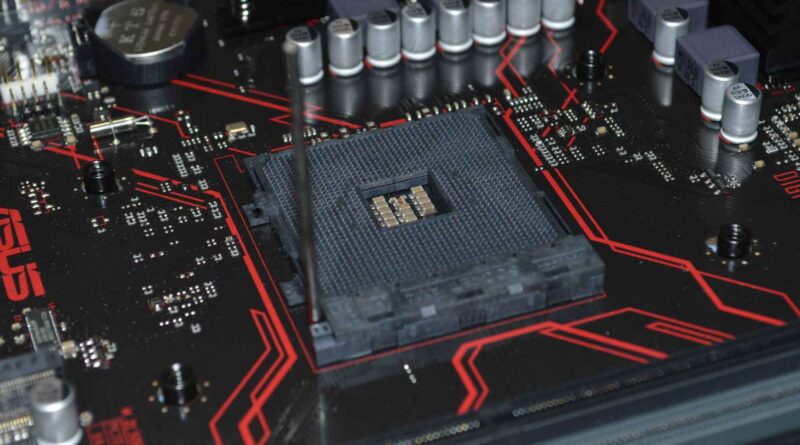LGA vs. PGA: Computer Socket Types Explained
In the CPU market, there are two major industry leaders. They are AMD and Intel. The customers often compare the technologies used in their products, arguing which side is better. One of the most arguable standards between AMD and Intel is the CPU socket type are,
- Land Grid Array (LGA)
- Pin Grid Array (PGA).
In this article, you will know about the comprehensive comparison of the LGA and PGA of the computer sockets.
What is meant by CPU sockets?
CPU sockets are simple too. With the help of sockets attached to the motherboard, the CPU gains the ability to communicate with the individual components of the motherboard. It is known as CPU sockets.
LGA (Land Grid Array):
Most ‘Intel’ uses this type of socket, although there are some exceptions. Not only Intel, but AMD also uses the LGA socket in some cases. For example, AMD’ Threadripper’ CPUs use the TR4 socket. This is the LGA socket. In the case of LGA, it has a very small pin. They are connected across the socket, and the CPU has no hooks attached. Rather have a small touchpoint. It’s in it so that it can connect to the socket. That means the CPU or processor can be connected to the socket via pins.
In this way, the CPU can be connected to the socket, and the electrical connection will work. Then other processes will continue. The name of the LGA socket can be assigned a pin number. For example, the LGA 1155 is a type of socket with a total of 1155 pins.
PGA (Pin Grid Array):
AMD primarily uses the PGA socket, although there are some exceptions. There are some Intel processors with PGA sockets, as well as some AMD processors with LGA sockets. Intel’s Pentium 2 processor, Pentium 3 processor, is a good example. The opposite will still be here. In this case, the CPU comes with tiny pins all over the body but there are no pins in the socket attached to the motherboard.
PGA is mainly used by AMD:
AMD uses a Pin Grid Array (PGA) after the G34 socket. In 2010, the latest Ryzen processors still used PGAs on the AM4 socket. Additionally, AMD’s Ryzen Threadripper and EPYC processors have moved to the LGA 4094 socket (TR4/SP3) New, larger version. According to recent rumours, AMD’s upcoming AM5 socket for mainstream platforms will also switch to the LGA 1718 model.
The contact pins are located on the CPU for the Pin Grid Array, while the sockets on the motherboard have holes for fixing the CPU. This type of socket is known as a zero insertion force socket. This means that the CPU will be able to drop without pressure.
LGA mainly used by Intel:
In 2004, the Socket J (LGA 771) Intel has been using Land Grid Arrays for over a decade. All processors from Core i7 to Pentium/Celeron use the same LGA socket. Current 7th generation CPUs use the LGA 1151 socket, which has an 1151 contact pin on the socket.
The Land Grid Array is the complete opposite of the PGA. All contact pins are on the socket. It is soldered to the motherboard. Instead, the same numbers of contact pads are on the CPU for connection.
Comparison between LGA and PGA:
You can be wondering which CPU socket is better. The answer is no. There is no definitive answer about choosing an LGA or a PGA socket. The advantages of the LGA sockets and PGA sockets are given by,
Advantages of LGA sockets:
- The processor is less likely to suffer damage from improper handling and dropping. Because there are no fragile pins. (more durable CPU)
- LGA pins are smaller in actual size but it will make more pins in the same area. (Save more space)
Advantages of PGA sockets:
- The motherboard is rarely damaged by the orientation of the CPU (more durable motherboards).
- It is used to repairing bent pins on PGA processors is more accessible than on LGA motherboards (slightly better repairs).
- In summary, both LGA and PGA sockets have their respective pros and cons. you can use LGA sockets because they are easy to use. A slightly bent pin will cause the motherboard to be toasted, though. But it can be avoided with extra caution.
What are the different types of PGA?
The different types of PGA sockets are given by,
With the Ceramic Pin Grid Array (CPGA), the semiconductor chip is fixed on a thermally conductive ceramic carrier; it is used in the first generation Intel Pentium, AMD Athlon series a socket, and Duron family.
With Plastic Pin Grid Array (PPGA), which is a semiconductor chip that is made of plastic, this model is slightly cheaper has better thermal properties and better electrical performance than PPGA ceramics, mainly used for Pentium MMX and Celeron processors.
Staggered Pin Grid Array (SPGA) is a staggering connected row. This variable is required for CPUs with more than 200 connections since the offset layout has more space. It was used with the Pentium and later processors.
With the Flip-Chip Pin Grid Array (FCPGA): It is the integrated circuit that is attached to the top of the carrier. This design is used, for example, in the Pentium III and some Celeron processors.
Which one is better for your CPU, LGA or PGA?
Both sockets are at their peak of development. Not much left to add or remove. Contact pins are now as small as possible. Processor manufacturers have to increase the number of pins and increase the size of the socket in the next generation of processors.
PGA sockets are perfect for processors with less than 1800 contact pins because the density of the contact pins is greater in the socket. Therefore, LGA is perfectly compatible with processors with more than 2000 pins.
AMD can utilize the PGA socket in its Athlon, Ryzen 3,5,7,9 processors, and the LGA socket for Threadripper and Epyc processors. Intel currently uses the LGA socket for every processor they manufacture. You can check more socket history here.
LGA VS PGA Socket, which is better? It’s simple. You can’t choose a socket type when creating a computer. The processor you select determines the socket type and version you need to purchase for that processor. The type of the does not affect performance in any way. Both sockets are almost equally good and bad. No socket can be repaired or replaced when damaged. Do not select the socket and then select the processor. Always choose the CPU first. Then look for a motherboard that has a compatible socket.
In the future, LGA sockets are better as the number of connectors will increase in the future. AMD has to leave the PGA socket to make the CPU smaller.
Final thought:
There is no definite answer for LGA vs. PGA because some users say ‘LGA’ while others say ‘PGA.’ As per the discussion, the LGA is the best because the pins are not installed on the CPU. If something bad happens during the installation, your precious CPU will not be damaged. Also, CPUs are more expensive than motherboards, but to be honest, apart from the socket type. You need to consider other factors a lot while you build your new PC.




